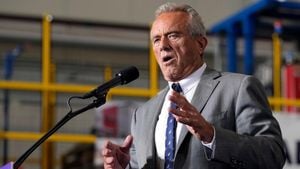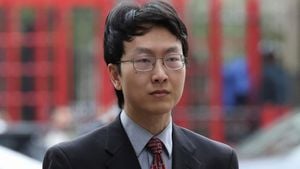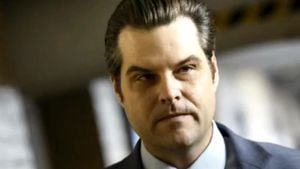Pope Francis has made headlines with his recent decision to revise the traditional rituals surrounding papal funerals, setting forth plans for his own burial. This move, characterized by simplicity and humility, aligns with his enduring mission to reshape the Catholic Church's image as one focused more on faith than on the trappings of power.
According to the Vatican, the long-held custom of three stacked coffins—typically made from cypress, lead, and elm—will be replaced by one straightforward wooden coffin lined with zinc. This change not only simplifies the burial process but reflects Francis's view of himself as not merely the leader of the Catholic Church, but as "a pastor and disciple of Christ." His intention, Diego Ravelli, the master of pontifical liturgical celebrations, emphasized to Vatican News, is to convey the humility at the heart of this office.
The newly revised funeral rites embrace the motto of simplicity, which Francis expressed last year as his primary goal. Notably, death ascertainment, usually conducted where the pope dies, will now occur in his private chapel instead.
Instead of being displayed on high platforms like previous popes, Francis’s body will be accessible to the faithful as it rests within the single, open coffin laid out within St. Peter's Basilica. This signifies not just breaking from tradition but also redefines what it means to honor the dead within the ecclesiastical framework. Visitors can pay their respects, and the focus will shift from the ornate to the personal, echoing Francis's vision of what death means within the faith.
This updates the Ordo Exsequiarum Romani Pontificis, the liturgical book for papal funerals, replacing the edition last used for John Paul II's burial. It stands as both an acknowledgment of Francis's health struggles and a commitment to his adapted leadership style, emphasizing service rather than ostentation.
The 87-year-old pontiff, set to turn 88 come December, has faced health challenges, relying on wheelchairs for mobility at times. Nonetheless, he has continued to actively engage with the world, attending trips abroad and overseeing significant events at the Vatican.
While past popes have been buried within the Vatican—symbolizing both historical and ecclesiastical authority—Francis has opted for something different, requesting interment at the Basilica of St. Mary Major. This well-respected site holds special significance for Francis, where he has prayed often during his papacy. This move marks the first time since Pope Leo XIII's death over 100 years ago, back in 1903, for any pope to rest beyond the Vatican.
This decision on his burial site reinforces his desire for the papacy to prioritise being accessible and grounded. The centuries-old tradition of placing coins and papal documents within the elaborate coffins will give way to greater focus on faith and pastoral service, encapsulating Francis's vision throughout his tenure.
This isn’t just about the funeral itself; it speaks volumes about how Francis views his legacy. By embracing the value of simplicity, he encourages the Church to re-evaluate its priorities. The directive is clear: forsake the grandeur often associated with high office and return to the essence of Christian faith.
Francis’s aspiration for humility extends to his life's work, illustrating his consistent effort to align Church practices with the teachings of Christ. This latest update to papal funeral practices not only honors his preferences but also sets the tone for future generations of church leadership, steering away from pomp and focusing on the heart of spirituality.
His efforts reflect broader conversations within the Catholic Church about authority, humility, and leadership. Over the years, he has questioned established conventions, woven humility throughout not only his teachings but also the very fabric of Church function. During his reign, he has consistently urged church leadership away from paralleled lives of excess, nurturing attitudes toward serving rather than being served.
With these innovative funeral rules, Pope Francis is touting the practicality of faith over formality; it’s about directing the spotlight away from himself and instead onto the message of Christ’s teachings. This is the kind of legacy he wishes to leave behind—one not of standout pomp but of collective devotion.
While some may see this as merely replacing one tradition with another, for many Catholics, it’s about seeing their leader as they would want to be seen—an individual who walks alongside them, rather than above them. A reminder to all, from the most exalted to the meekest congregants, of the fundamental values of the faith. Franics teaches, through his gestures even unto death, not about the weight of earthly titles but the eternal call to serve.
There will always be those who view the role of the pope as one of significant weight and authority, yet through his actions, Pope Francis exemplifies the notion of service. His departure from tradition signals the beginning of what many hope will be not just his legacy but the Church’s evolution toward sustained commitment to Christ’s message of love and community.



